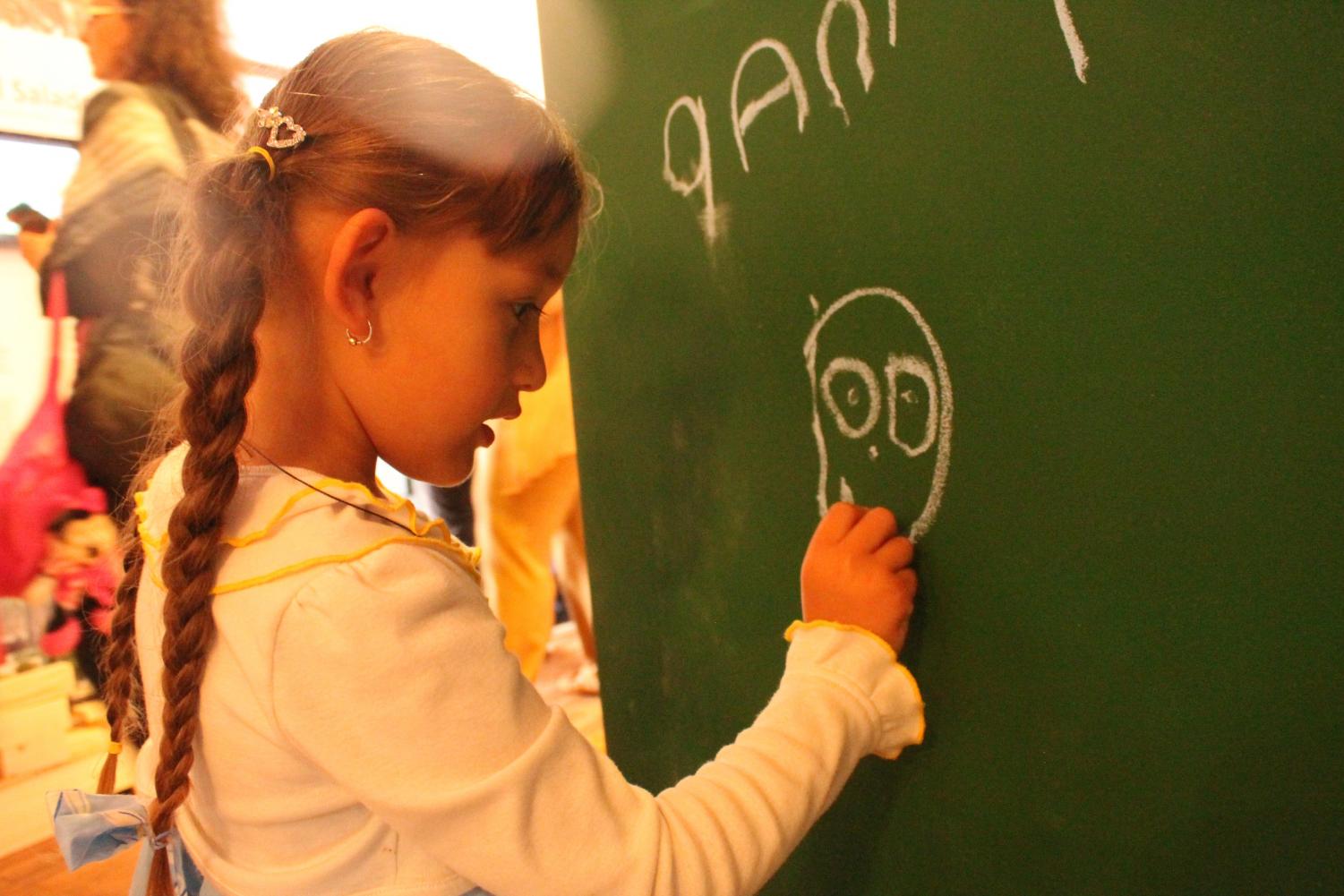Your donation will support the student journalists of The Tide, Richard Montgomery High School's student newspaper. Your contribution will allow us to purchase equipment and cover our annual website hosting costs.
Should ESOL teachers be bilingual?
April 9, 2019
Current MCPS English as a Second Language (ESOL) classrooms comprise of non-native English students with a teacher who only speaks English. Opponents of this lack of requirement have sparked a lively debate on how to best instruct ESOL students, asserting that schools should require their ESOL teachers to be bilingual. However, teaching a foreign language without using the student’s native language is ultimately the most effective way to teach and learn a language.
Learning a new language is like learning to ride a bike. Using the training wheels feels safer, but if you never take off the training wheels, you will never really learn how to ride a bike. Similarly, if you are always relying on the support of your first language, you will never become fluent in another language.
“My sole purpose as an ESOL teacher is to teach my students English, so if I’m slipping into Spanish all the time with them, are they really learning the language?” RM ESOL teacher Jill Schuck said. “The best way to learn a language is to be completely be immersed in the language.” Students need to constantly interact with English in order to learn it.
“I refrain from using Spanish with all my students because the goal is for them to learn English,” RM ESOL teacher Claudia Austin said. Although using their native language is the path of least resistance, it will only slow down their progress in the long run.
“I feel like teachers that are not bilingual encourage their students to learn the language faster and to engage in their lessons. If ESOL teachers are not bilingual, then it will prepare students for the ‘real world’ where most Americans only speak English,” non-ESOL freshman Monica Escalante said. Similarly, researchers at the Stanford Graduate School of Education and San Francisco Unified School District found that English learners in the dual language immersion programs scored 0.15 standard deviations below their peers in English immersion in the English Language Arts test, showing how current ESOL instruction is more effective than bilingual instruction.
In addition, our society’s diversity makes it difficult for ESOL teachers to know all of the languages their students speak. “Currently, I have students who speak Turkish, Chinese, Oromo, French, Sinhalese, Russian,” said Schuck. “So if I’m bilingual in Spanish, it is great for me to communicate with my Spanish students, but I also have Turkish, Chinese, Oromo, French, Sinhalese, Russian students to teach.” It is very unrealistic to require all ESOL teachers to have to communicate in all of these languages.
The number of English learners across the United States has grown by roughly 60 percent over the past decade. It is the responsibility of public schools to educate ESOL students equitably and set them up for long-term success.
“In addition to wanting all of our ESOL students to be fluent English speakers, listeners, readers, and writers, my colleagues and I also want ESOL students feel part of the community, learn about the culture of the country, to get an academic identity, have appropriate clothes for the seasons, and to understand what it is to be a student in America,” said Schuck.
In order to achieve this multifaceted goal, we need to ensure that we keep our ESOL teacher requirements the way they are right now.
